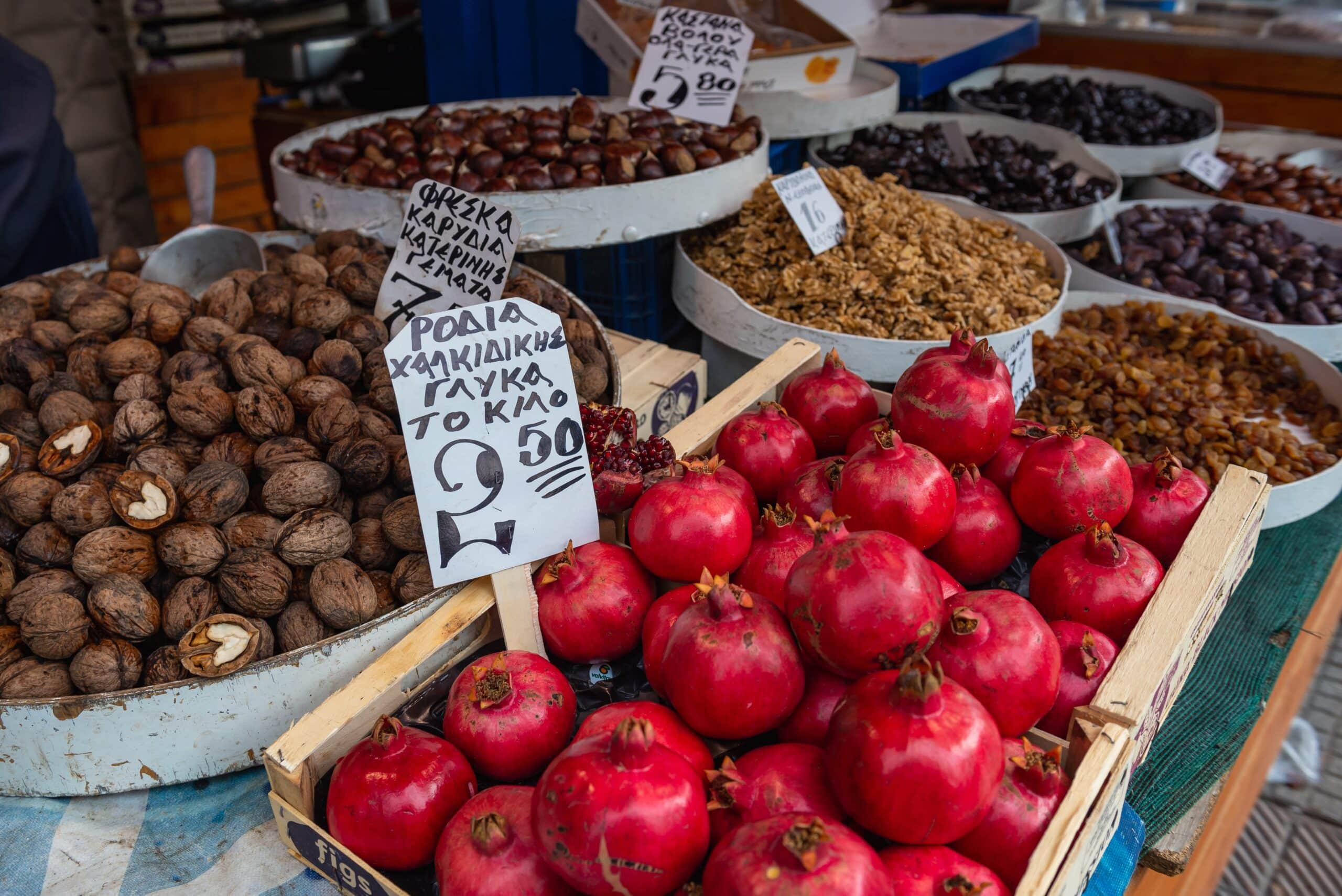
How to Eat Like a Local in Greece: Dining Etiquette & Tips
A Taste of Greek Culture Beyond the Plate
Eating in Greece isn’t just about enjoying world-class Mediterranean food — it’s about immersing yourself in culture, community, and tradition. Whether you’re enjoying a seaside taverna in the Cyclades or having a homemade meal in a mountain village, knowing the local dining etiquette and customs can elevate your experience.
This guide will help you eat like a Greek — from how to order and share food, to understanding mealtimes and tipping culture. It’s your passport to authentic Greek hospitality.
Outline
- Greek Food Culture: A Social Affair
- Typical Greek Mealtimes
- Understanding the Menu: What and How Greeks Eat
- Dining Etiquette: Do’s and Don’ts
- How to Order Like a Local
- Tipping in Greece
- Eating Out: Taverna vs. Psistaria vs. Estiatorio
- Bonus Tips: Eating in Homes and at Celebrations
- Conclusion: When in Greece, Eat as the Greeks Do
1. Greek Food Culture: A Social Affair
In Greece, food is meant to be shared. Meals are rarely rushed and often stretch over several hours, especially when enjoyed with family or friends.
Core aspects of Greek food culture:
- Meals are social events, not just functional stops.
- Dishes are ordered for the table, not the individual.
- Eating and drinking are often accompanied by laughter, storytelling, and music.
Pro Tip: Don’t rush. Even a casual lunch can turn into a leisurely affair.
2. Typical Greek Mealtimes
| Meal | Local Time | What’s Typical |
|---|---|---|
| Breakfast | 8:00–10:00 | Light: coffee, koulouri (sesame bread), yoghurt with honey |
| Lunch (Mesimeriano) | 13:30–15:30 | Main meal: grilled meat/fish, salad, stews |
| Afternoon Coffee | 17:00–19:00 | Served with spoon sweets or a biscuit |
| Dinner (Vradino) | 20:00–22:30 | Lighter or social meal, often eaten out |
Note: Greeks dine later than most Europeans, especially in summer.
3. Understanding the Menu: What and How Greeks Eat
Meal Structure:
- Appetisers (Orektika): Tzatziki, saganaki, dolmades, fava
- Salads (Salata): Horiatiki (Greek salad) is a staple
- Mains (Kyria piata): Moussaka, grilled meats, seafood
- Sides: Oven-roasted potatoes, greens with lemon
- Desserts: Often fresh fruit, spoon sweets, or a complimentary treat
Common Beverages:
- Ouzo or tsipouro with appetisers
- Greek wine or beer (Mythos, Fix) with meals
- Greek coffee or frappé to finish
4. Dining Etiquette: Do’s and Don’ts
✅ Do:
- Greet with “Kalimera” (Good morning) or “Kalispera” (Good evening).
- Expect a shared table style — many small plates, eaten together.
- Wait to be seated by staff, especially in traditional tavernas.
- Use bread to scoop dips or sauces — it’s normal and encouraged.
- Compliment the food! Greeks are proud of their cooking.
❌ Don’t:
- Start eating before everyone is served and the toast is made.
- Ask for butter with your bread — it’s served plain or with olive oil.
- Expect speedy service — meals are relaxed, not rushed.
- Waste food — sharing leftovers or asking to take them home is okay.
5. How to Order Like a Local
- Ask for recommendations – Greeks love to suggest favourites.
- Say: “Tha ithela…” (“I would like…”) or “Ti mou protinete?” (“What do you recommend?”)
- Order mezze-style (small plates) to get a bit of everything.
- Share a Greek salad for the table – it’s not a side salad!
- Don’t order water – it’s automatically brought to your table and often free.
Insider Tip: If you’re not super hungry, share a “pikilia” (mixed platter) of grilled meats or seafood.
6. Tipping in Greece
Tipping is appreciated but not obligatory.
| Situation | How Much to Tip |
|---|---|
| Casual taverna | Round up or 5–10% |
| Fancier restaurant | 10–15% if service was excellent |
| Coffee or bakery | Coins or round to nearest euro |
| Taxi driver | Optional – round up |
Always check if service is already included in the bill (sometimes noted at the bottom).
7. Eating Out: Taverna vs. Psistaria vs. Estiatorio
| Type | Description | What to Expect |
|---|---|---|
| Taverna | Traditional, family-run eatery | Hearty meals, home-style cooking |
| Psistaria | Grill house | Specialises in souvlaki, kontosouvli, grilled meats |
| Estiatorio | More formal restaurant | Full menu, often with seafood or creative cuisine |
For a truly local experience, head to a taverna off the tourist path — the food is usually better and cheaper.
8. Bonus Tips: Eating in Homes and at Celebrations
If you’re lucky enough to be invited into a Greek home:
- Bring a small gift – wine, sweets, or flowers.
- Expect lots of food — and second helpings are a compliment!
- It’s polite to accept what’s offered, even if just a taste.
- Be prepared for multi-course meals that can last for hours.
During holidays (like Easter or name days), food plays a central role, often with lamb, traditional desserts, and long communal feasts.
9. Conclusion: When in Greece, Eat as the Greeks Do
Eating in Greece is about more than the dish in front of you — it’s a celebration of life, connection, and hospitality. Whether you’re grabbing street food or sitting down to a homemade feast, following local dining customs lets you experience Greece like a true insider.
So take your time, share your meal, raise a glass of ouzo, and say “Stin ygeia mas!” — To our health!